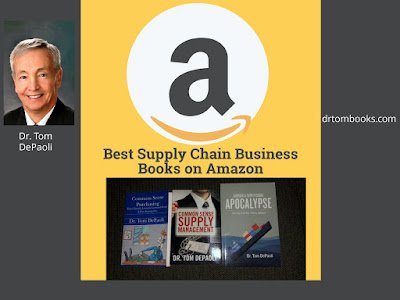Over 95% of purchasing or supply management organizations do not have a long term strategic plan. This is not surprising given the dynamic and hectic pace of purchasing organizations. Many of the ones that are completed are done once and filed in a drawer or hard drive to never to be referred to again. They do require a lot of effort and support form top management to become useful and meaningful. They are essential to keeping purchasing on track and focused on the most important supply chain improvement efforts. Long term plans serve as a great focal point for purchasing and insure efforts are not overwhelmed by constant fire-fighting and other efforts. They can be guides for the stages of transformation that a purchasing department wants to achieve, and reveal to non-purchasing personnel the direction that purchasing wants to head in. First off, create a vision and mission statement that aligns with the organization’s vision and mission statement. Be bold and make sure people realize that you are aiming for supply management not traditional bureaucratic purchasing. Try to gain a broad consensus and gather input from surveys, one-on-one meetings, research and as many employees, suppliers and customers as possible.
There are limitations to this guide. I am certain that I have missed some areas but I have tried to be as comprehensive as possible. Use this document as a guide and checklist not a dogmatic methodology. It is extremely difficult to predict the future as technology and the macro environment are rapidly changing. Global events can radically alter the supply chain and require new innovative strategies. Collaboration is the norm now, but collaboration can also be cyclical and have peaks and valleys of cooperation. People are the strength of an organization and any strategic plan that does not focus on people development is woefully inadequate. Many companies also have to cope with dealing with multi-generational group differences.
New products can require new supply chain tactics and alter your product mix landscape. Competitive pressures can often dictate rapid responses and major changes in product marketing and sourcing. Communication is becoming even more critical in this rapid paced world. The selling or marketing of the strategic plan is even more crucial.
Once in place a strategic plan is much easier to update, review and fine tune. It is important to keep it dynamic, up to date and a living document. I hope this guide motivates the reader to take the journey of completing a strategic plan. Good luck in the journey!
Here are some suggested objectives of a long term strategic plan:
· Present a five year comprehensive purchasing strategy
· Identify all the resources required
· Make recommendations
· Explain expected results & benefits
· Introduce performance measures
· Make modern supply management a reality
Here are some major focus areas that should be included in the strategic plan:
· New organization and reporting structure
· Lead-time and cycle time reduction with the sue of process improvement methodology such as Lean and Lean Six Sigma
· Improved customer service initiatives and measurements for the Voice of the Customer (VOC)
· Material flow and materials planning across the entire supply chain
· Pride and professionalism initiatives for people
· World class supplier strategies
· Information systems upgrades
· End-user empowerment both internal and customer
· Communications and marketing plans
· performance measures and metrics
Contact Dr. Tom = thomasdepaoli@yahoo.com drtombooks.com for newsletter sign up https://drtombooks.com/contact/ My Books link: https://www.amazon.com/Tom-DePaoli/e/B003XSV1IQ

No comments:
Post a Comment